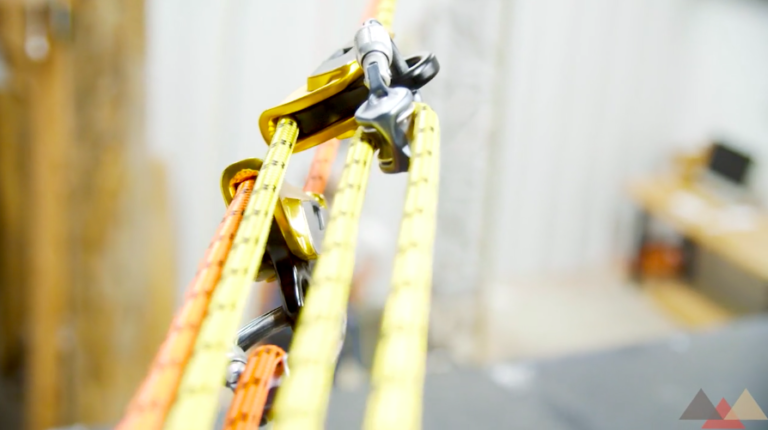Understanding the Critical Role of Equipment Selection
In the world of rope rescue, the choices made about equipment can spell the difference between a successful operation and a tragic failure. Equipment is not just about tools; it’s about ensuring the safety of rescuers and victims while maximizing operational efficiency. The process of selecting the right gear is not merely a logistical task but a strategic operation in its own right, rooted in a deep understanding of the rescue environment, team capabilities, and the demands of the scenario.
The Strategic Importance of Equipment Selection
Equipment selection is fundamentally tied to the rescue mission’s goals. Each piece of gear must align with the operation’s specific requirements, whether it’s navigating high-angle environments, performing swift water rescues, or tackling confined spaces. This necessitates pre-planning that anticipates potential rescue scenarios and ensures the right gear is on hand to meet them.
For example, static ropes are indispensable for high-angle rescues due to their minimal stretch under load, ensuring stability for both rescuers and victims. Conversely, dynamic ropes may be necessary in scenarios where fall arrest capabilities are critical. The terrain, weather, and accessibility of the location also play crucial roles in determining what equipment is essential. A mountainous environment may require lightweight gear for easier transport, whereas industrial rescues might prioritize load-bearing strength over portability.
The Role of Team Capabilities in Equipment Choices
The skill level and training of the rescue team are equally important in the selection process. Advanced tools such as auto-locking descenders or progress capture pulleys require specialized knowledge and regular practice to use effectively. Teams that have invested in training for these tools will benefit from their efficiency, but for less experienced teams, simpler, more intuitive equipment might be the safer choice.
Additionally, team size impacts equipment needs. Smaller teams may rely on compact, multi-functional gear to reduce the number of items they must carry, while larger teams can afford to specialize equipment roles among members. Training programs must regularly assess and update team members’ proficiencies to ensure that the equipment selected aligns with their operational capabilities.
Key Considerations for Rope Rescue Equipment
While the choices vary based on operational demands, some universal principles guide effective equipment selection:
- Durability and Longevity: High-quality materials are crucial to withstand the rigors of rescue operations. Ropes with high abrasion resistance, carabiners with secure locking mechanisms, and harnesses with reinforced stitching are all non-negotiable.
- Ease of Use: Equipment that is intuitive and quick to deploy minimizes delays in high-pressure scenarios.
- Load Ratings: Ensuring that all equipment meets or exceeds safety standards is critical, particularly in scenarios where the weight of multiple rescuers and victims must be supported.
- Versatility: Multi-functional tools such as pulley systems with integrated progress capture or modular anchor kits enhance operational flexibility.
Building a Framework for Equipment Selection
To navigate the complexities of equipment selection, rescue teams should adopt a structured approach:
- Evaluate the Operational Landscape: Conduct a detailed analysis of the environments and scenarios most frequently encountered by the team. For instance, an urban fire department may prioritize confined space and high-angle rescue equipment, while a wilderness SAR team might focus on lightweight gear for remote operations.
- Identify Critical Needs: Determine the core functions required for rescue success. Is swift water rescue a recurring need? Does the team often operate in areas with limited anchor points, necessitating portable systems? This step ensures that investments focus on addressing primary challenges.
- Match Gear to Training: Select equipment that complements the team’s current skills while also providing opportunities for growth. For example, transitioning from basic to advanced pulley systems could enhance efficiency while encouraging skill development.
- Plan for Contingencies: Equip the team for low-probability, high-impact scenarios. Items such as spare harnesses, redundant anchor kits, and emergency flotation devices may rarely be used but are indispensable in critical moments.
Conclusion
The process of selecting rope rescue equipment goes far beyond compiling a list of tools. It’s an exercise in strategic foresight, aligning operational needs with team capabilities and the demands of the rescue environment. By taking a disciplined approach to equipment selection, rescue teams can ensure they are prepared for the challenges they will face, enhancing both the safety of their operations and their ability to save lives.
SEO Elements
Title and Keyphrase: Rope Rescue Equipment Selection
Slug: rope-rescue-equipment-selection
Meta Description: Discover how to strategically select rope rescue equipment, aligning operational needs with team capabilities for enhanced safety and effectiveness.
Tags: rope rescue, equipment selection, rope rescue gear, rescue equipment, rope rescue training, equipment safety
Reference Links:
Peace on your Days
Lance









